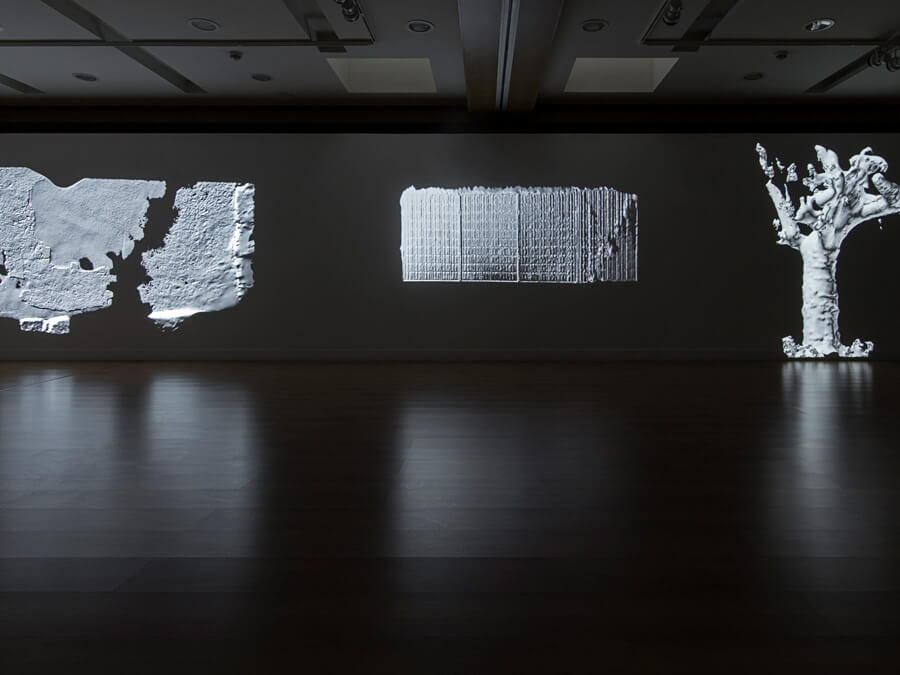Tell us a little about yourself.
I was born and raised in Athens and I always had a keen interest in art history, history and archaeology, which I ended up studying at the University of Athens. Curious about the art market and how the art world works in general, I went on to do my MA in Art Business at Sotheby’s Institute of Art in London and I’ve been working with profit & non-profit art institutions for the past ten years. Apart from art, I love traveling and reading, because they give me the opportunity to discover new things and broaden my horizons further.

After London, what made you return to Athens?
I’ll tell you what convinced me to stay: when I returned to Athens in 2013, I worked in the production of the 4th Athens Biennale, titled AGORA, which took place at the former Athens Stock Exchange. Despite the dire economic situation in Greece, I was impressed by the resourcefulness of the Athenian art community and other creative locals who made real efforts to turn run-down corners of the city into little wonders.
Can you name two must-visit museums for someone visiting Athens?
Of course, the National Archaeological Museum and the Cycladic Museum have some of the most important ancient artifacts in the world, whereas The Benaki Museum has a stellar collection of Greek and Islamic works of art. But if you love painting, you should definitely visit the newly opened Goulandris Museum, which features small and large masterpieces of impressionist, modern and contemporary art, as well as works by acclaimed Greek artists. You may have to wait for another year to visit the renovated National Gallery, but the National Museum of Contemporary Art (EMST) is finally set to permanently open to the public this month and it will definitely be a must-visit for anyone who wants to discover the most important Greek artists next to some very well-known international counterparts.
Do you think that we can speak of ‘Greek Art’ today?
In my humble opinion, in our age of globalization and constant exchange of information via the Internet and social media, artists have become so mobile by studying abroad or doing international residencies that it is difficult to define art in purely regional terms. Contemporary Greek artists are no exception. But if we were to look for common threads to contemporary Greek creativity, I would say that certainly, one is the re-examination of the definition and essence of Greekness and the values that have been connected to it. Also, it is really interesting to see contemporary artworks with materials like clay and marble, which are traditionally linked to ancient Greek art, or gold that is linked to Byzantine painting.
Who is your favorite Greek artist and why?
Oh, I could never choose just one! So, I’ll just say the ones that come at the top of my head and only living artists. For the reasons that I have already mentioned, I love the sculptures of Andreas Lolis, Petros Moris and Stefania Strouza, as well as the ceramics of Giorgos Tserionis and the mixed media works of Eirene Efstathiou and Rania Bellou. I am always astounded by the intricate drawing behind the paintings of Elias Kafouros, Stelios Faitakis and Konstantinos Papamichalopoulos. The video narratives of Loukia Alavanou and Thodoris Prodromidis are also memorable, as well as the photographs of Panos Kokkinias and the installations of Manolis Daskalakis-Lemos.

Do you think Athens is going to play an important role in the global art scene in the upcoming years?
It is no secret that the economic crisis was a great benefactor for the arts here: suddenly, making art in Athens became very important. It turned out that the buzz wasn’t just about ‘documenta 14’ taking place, in part, here in 2017. Greek and international artists continue to come here and set up their studios and big institutions like The Onassis Foundation, the Stavros Niarchos Foundation Cultural Centre, NEON Organisation and the Athens Biennale, keep inviting top curators and artists to work and exhibit here. So, I think it’s safe to say that Athens will remain a meeting place for art aficionados in the coming years. Let’s not forget that we’re waiting to see what EMST and the Goulandris Museum are going to do.
Any tips for art lovers visiting Athens? Where to go, what to do?
You should definitely check if NEON is hosting an exhibition somewhere in the city: their productions are always of international standards. There are some very good galleries to visit like Bernier/Eliades, Kalfayan Gallery, The Breeder and Eleni Koroneou Gallery, which participate in the most important international art fairs, as well as Ileana Tounta Contemporary Art Centre and a.antonopoulou.art. But if you’re looking for something more cutting edge, you should look for artist-run spaces like Snehta Residency, Hot Wheels and Sub Rosa Space, or not-for-profits like State of Concept and cheapart (there are many and scattered all over the city). Last but not the least, you have to take a walk from Psyri to Metaxourgio and Gazi, to discover another famous aspect of Athens: its street art (often called its new capital).

Where is your go-to bar if you wish to combine good music and art?
Unfortunately, there aren’t many places in Athens that can brag about having that combination. I would say that TAF (The Art Foundation) would be the best choice.
What is your favorite place in the whole city?
As a child of the southern suburbs of the city, I will have to say that my favorite place is the Athens Riviera. We are one of the few lucky cities in the world that have the sea and the beach in such a short distance from the city center. So, grab a cab from the Acropolis and ask the driver to take you down Syngrou Avenue to Poseidonos Avenue and drive you all the way to Vouliagmeni. There’s no better ride for a sunny afternoon!
Tells us a secret – or your secret – about Athens!
Not many people know that Museum Alex Mylona, a beautiful neoclassical building between Thissio and Psyri, with a remarkable collection of abstract sculptures by its homonymous founder, has a terrace with one of the best unobstructed views from Piraeus and Gazi to the Acropolis and Lycabettus.
We would like to thank Annita Apostolaki for her time and for sharing with us her valuable insights on the artistic side of our beloved Athens.





